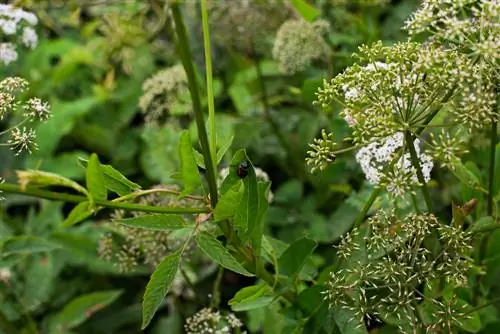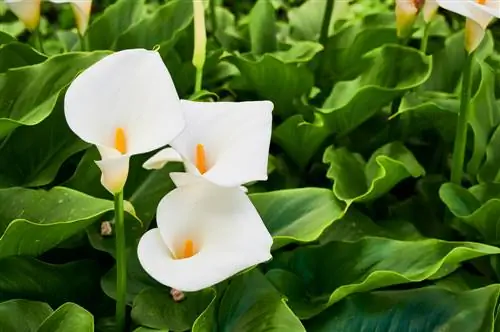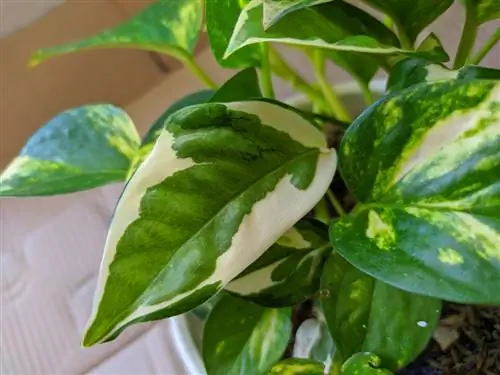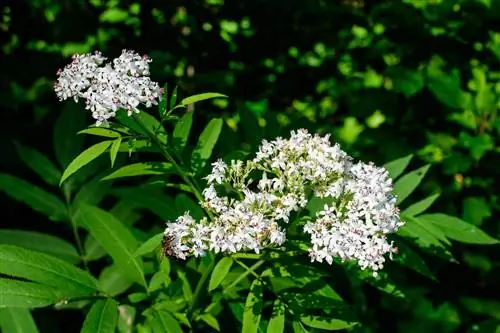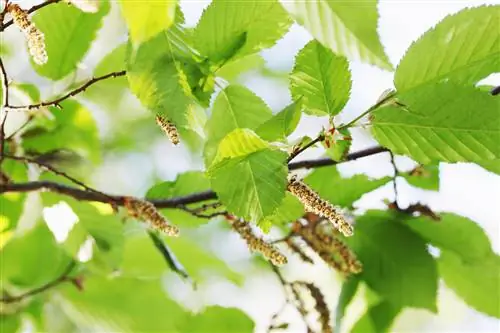- Author admin [email protected].
- Public 2023-12-16 16:46.
- Last modified 2025-06-01 06:02.
The many warnings about the dangerous giant hogweed are fatal to various natural beauties because they look similar to the poisonous plant and are rigorously destroyed. Other floral twins even top the danger level of a Hercules perennial. This guide will inform you about threatening and harmless plants that look confusingly similar to hogweed.

Which plants look similar to hogweed?
Plants that look similar to hogweed include angelica, wild carrot, cow parsley, cob, wild fennel and sweet umbel. Particular caution is required with similar poisonous plants such as spotted hemlock and dog parsley.
Doppelgänger with killer qualities - spotted hemlock contains deadly poison
The damage to he alth after contact with giant hogweed is harmless compared to a highly toxic counterpart. Spotted hemlock (Conium maculatum) is laced with a poison that causes death in even tiny amounts. To this day, the term hemlock is synonymous with death and ruin because the poisonous plant was used for executions in ancient times. The most famous victim was the philosopher Socrates in 399 BC. The high risk of confusion between giant hogweed and spotted hemlock is based on the following similarities:
- Both plants belong to the umbelliferous family
- Growth height from 80 to 300 cm
- Blooming period of the white, radiating umbel flowers from June
- Hollow stem with red spots or overflowing with red
- Large, green, pinnate leaves
Since contact with giant hogweed is not fatal, but can cause burns to the skin, we recommend rigorously removing both plants from the garden. Wear protective clothing, eye protection and boots and completely destroy all plant debris.
Dog parsley at eye level with hemlock
Dog parsley (Aethusa cynapium) is also difficult to distinguish from giant hogweed. In terms of poison content, the dreaded weed is of course on a par with spotted hemlock. However, the risk of confusion with parsley is much greater.
Harmless floral images are in the majority - just don't panic
Don't let the numerous warnings about giant hogweed and its poisonous counterparts unsettle you. In fact, the vast majority of similar plants are completely harmless and important for ecological balance. The following overview lists non-poisonous plants that look deceptively similar to hogweed:
- Forest angelica (Angelica sylvestris), a traditional medicinal plant
- Wild carrot (Daucus carota subsp. carota), the forerunner of our cultivated carrot
- Cow parsley (Anthriscus sylvestris), a popular herb plant
- Great Bibernelle, Great Pimpernelle (Pimpinella major), with spicy, aromatic leaves for salads and as a spice
- Wild fennel (Foeniculum vulgare var. vulgare), the white-flowering progenitor of yellow-flowering garden fennel
- Sweet umbel (Myrrhis odorata), the versatile plant for the natural vegetable garden
A much misunderstood doppelganger of hogweed should not be missing from this list. Ground greed (Aegopodium podagraria) is much better than its reputation. Instead of vehemently fighting the strong-growing plant as a weed, ecologically oriented home gardeners with a penchant for natural cuisine have discovered Giersch as a tasty wild vegetable.
Tip
The appearance of giant hogweed or spotted hemlock does not have to be reported, despite the potential danger. If you discover one of the two plants in the field or forest, we recommend that you still report the location to the environmental agency or public order office. Immediate control prevents further spread and prevents playing children from being harmed.

